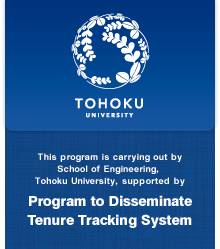| 2012 - | Associate Professor, Department of Nanomechanics, Tohoku University |
|---|---|
| 2009 - | Part-time Lecturer, Department of Modern Mechanical Engineering, Waseda University |
| 2007 - | Research Associate, Department of Mechanical Engineering, Keio University |
| 2006 - | Completed Doctor Course Integrated Design Engineering, Graduate School of Science and Technology, Keio University |
| 2005 - | Academic Researcher, Department of Mechanical Engineering, Kobe University |
| 2006 - | Research Assistant, Department of Mechanical Engineering, Keio University |
| 2003 - | Completed Master Course Integrated Design Engineering, Graduate School of Science and Technology, Keio University |

Yoshiteru AOYAGI
Associate Professor,
Department of Nanomechanics,
Tohoku University
Profile
Keywords
Multiscale Modeling, Bulk Nanostructured Metals, Grain boundary, Dislocation, Crystal Plasticity, Radiation Defect, Stress Corrosion Cracking, Crack Propagation
A Challenge to Multiscale Modeling on Bulk Nanostructured Metals expressing peculiar behavior in material and mechanical aspects
In our everyday life, various pure and alloy metals exhibiting unique properties are used as structural materials. Based on the advancement of science, improvement in safety and reliability, reduction and recovery of resources and energy are expected in order to create a sustainable society.
Almost structural metallic materials consist of many crystal grains with varying grain sizes and crystal orientations. It is well known that some mechanical properties are improved with decrease of the grain size. Recently, many studies on “bulk nanostructured metals” (BNMs) with a grain size smaller than 1 ?m have actively been conducted. One of the subjects of my study is the “BNMs”. The complicated behavior of the BNMs is calculated by numerical simulation based on two different scale models that are an atomistic model expressing microstructure of grain boundary and a continuum model representing macroscopic structure, namely multiscale model. The aim of this work is that new findings are obtained by coupling the experimental and computational approaches.
The BNMs exhibit superior mechanical properties that cannot be seen in the conventional coarse-grained metallic materials. The BNMs will become driving force to solve the environment and energy problems as well as the great contribution to science and the industrial field.









